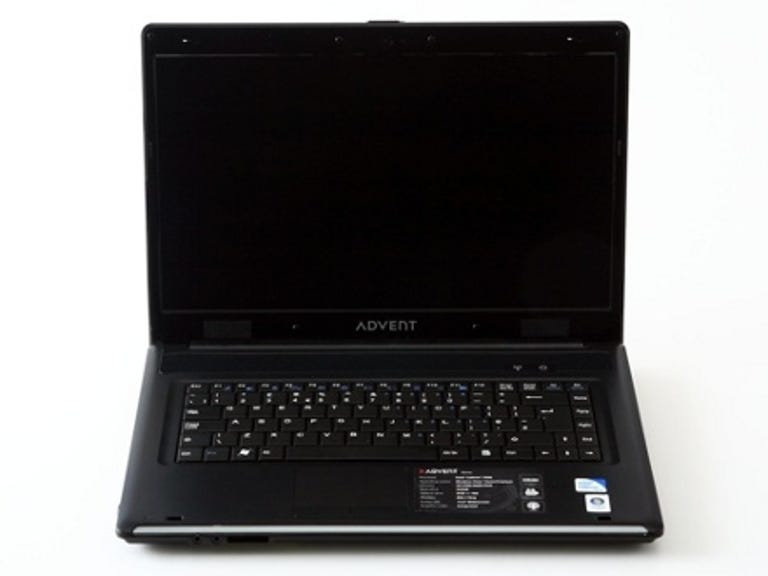 Why You Can Trust CNET
Why You Can Trust CNET Advent Roma 3000 review: Advent Roma 3000
The 15.6-inch Roma 3000 sports a particularly good keyboard, and its capable dual-core processor makes it much better suited to multi-tasking than the cheaper Roma 1000. Its battery life is disappointing and we'd prefer it to run the 64-bit version of Windows 7, but it's a solid budget laptop overall
The £350 Advent Roma 1000 is the cheapest Windows 7 laptop available at the moment, but it's also one of the slowest. About only £80 more buys the Roma 3000. It has the same chassis, but an improved specification.
The Good
The Bad
The Bottom Line
Two of a kind
There's absolutely nothing to visibly distinguish the 3000 from the 1000 -- both are big, black, 15.6-inch laptops that weigh in at a hefty 2.9kg. The lid on the 3000 has the same barely visible circular pattern as the 1000's, and, unfortunately, it sits on the same stiff, wobbly hinge.
Pop the catch that keeps the lid closed, and the 3000 is identical on the inside, too. Although the keyboards are the same on both models, we'll take time to mention them again. Cheap laptops often have rubbish keyboards, so Advent deserves credit for not opting for something flimsy with these machines. The 3000's low-profile keyboard has large, comfortable keys and is rock-solid across its whole width. That's something that can't be said of some laptops that cost considerably more.
Unfortunately, sound quality from the two speakers on the screen bezel is still awful, although it's perfectly adequate for the usual operating-system chirrups and occasional YouTube video.
Few laptops escape the avalanche of crapware that manufacturers feel obliged to install, and the 3000 is no exception. Both the 1000 and 3000 come with a mixed bundle of applications, but we were pleasantly surprised to see that Advent at least lets you opt out of its installation during both laptops' initial set-up.
Dual-core delights
Part of the 3000's £70 premium pays for a 2.1GHz Intel Pentium T4300 processor. The performance difference between the T4300 and the 2.2GHz Intel Celeron 900 in the 1000 is pronounced. The 1000 scored 2,020 in the PCMark05 benchmark test, while the 3000 scored 4,127.
The 3000 is clearly more capable than its cheaper counterpart, but the real difference becomes apparent when running multiple applications. The T4300 is a dual-core chip and, therefore, much more suited to multi-tasking than the single-core Celeron 900. It also appears to run slightly warmer, since there's a steady whoosh of warm air from the 3000's fan even when the laptop's idle.
The extra money also buys a larger, 500GB hard drive and an extra 1GB of RAM, bringing the total up to 4GB, but you still only get the 32-bit edition of Windows 7. The 4GB memory limit of all 32-bit editions of Windows means that only 2.93GB of memory is available for use on the Roma 3000 -- the rest is devoured by other devices. The 64-bit edition of Windows 7 has no such limitation, so it's a shame that Advent didn't opt for that instead.
The bigger budget doesn't stretch to better graphics though. The 3000 has the same Intel GMA 4500MHD chipset as the 1000. Its 3DMark06 score is a little higher, at 936, but this still isn't enough to make the 3000 good for much more than playing older DirectX 9 3D games at low detail and resolution settings.
We won't dwell on battery life, since the 3000 and 1000 are equally appalling when unplugged. The 3000 lasted for 50 minutes in Battery Eater's punishing Classic test, and 1 hour and 45 minutes in the less demanding Reader's test.
Conclusion
It's more expensive than the Advent Roma 1000, but the Roma 3000's improved performance and marginally higher specification make it a better option for use as a main computer. At this price, though, there are more options available to you, and Acer, Dell and Toshiba all have models that offer similar value for money.
Edited by Charles Kloet
